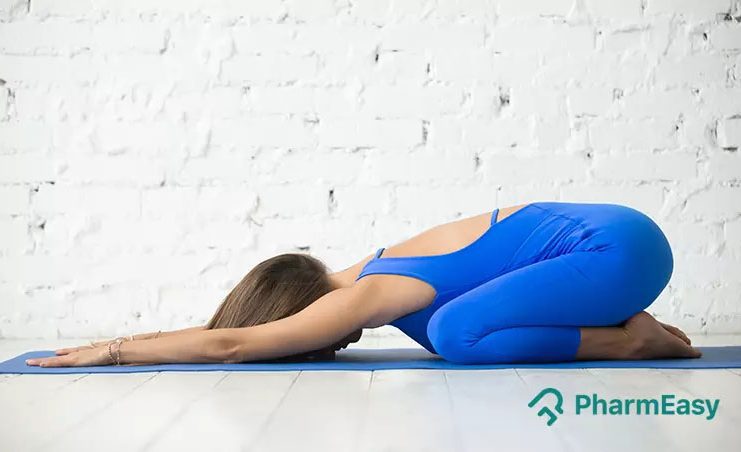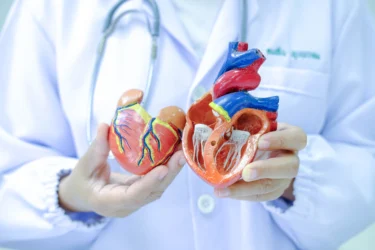Benefits of Shashankasana (Rabbit Pose) and How to Do it By Dr. Himani Bisht
By Dr. Himani Bisht +2 more

Get,

to manage your symptom
Get your,


4 Cr+ families
benefitted

OTP sent to 9988776655



You’ve successfully subscribed to receive
doctor-approved tips on
Whatsapp

Get ready to feel your best.

Hi There,
Download the PharmEasy App now!!


Register to Avail the Offer
Send OTPBy continuing, you agree with our Privacy Policy and Terms and Conditions

Hi There,
Sign up on PharmEasy now!!
Trusted by 4 crore+ families

OTP sent to 9988776655



You have unlocked 25% off on medicines




Code: NU25
By Dr. Himani Bisht +2 more
Table of Contents
Most of us are familiar with ‘yoga’ and have a vague idea about the same. We often associate ‘flexibility’ and ‘stretching’ with yoga. Yoga has been popularly practised in local fitness centers, gyms and even schools. Several celebrities have become yoga gurus in recent days. You would know that yoga. Today, yoga has been globalized, and a wide variety of people from various castes, creeds, religions, and national and ethnic backgrounds perform yoga. According to the writing of religious historian Mircea Eliade in 1954, “yoga derives from the root yuj, meaning to bind together or ‘hold fast,’ ‘yoke’. Pattabhi Jois, BKS Iyengar and several disciples of Swami Sivananda, like Swami Vishnudevananda, are some of the great historic gurus of yoga. Yoga consists of asanas are bending and contorting postures. Asanas or postures may be beneficial for psychological, mental and physical well-being1. Let us look at the health benefits of one such asana- Shashankasana.

Did you know?
Asanas are body postures that may stabilise the body and the mind. In Shashankasana, ‘shashank’ means moon, hence it is also known as the moon pose. Another name is sasakasana2. Sasaka means hare or rabbit, and asana means posture; hence shashankasana is also known as the hare posture. While performing this pose, it will look like you are sitting like a rabbit. This pose depicts the rounded spine of the rabbit. Shashankasana involves intense forward bending. You can feel a stretch in your back, shoulder and spine3.
You can perform shashankasana steps in the following way:
Rest in the visramasana pose (keep your legs extended in front of you, just place your hands behind your hips with fingers turning away from you)2.
Judging from what I’ve witnessed, Shashankasana might be a fantastic yoga pose that can do wonders for your back. This pose might create space between each vertebra, allowing them to breathe and relax. It may also help to relieve any pressure on the discs in your spine. You see when these discs squeeze the nerves coming out of your spinal cord, it may lead to discomfort and backaches. But with Shashankasana, you might be giving your back some much-needed rest, helping to alleviate those issues10.
Dr. Siddharth Gupta, B.A.M.S, M.D (Ayu)
Some of the health benefits of shashakasana are:

A study4 by Holkar et al. conducted on 60 subjects 40-60 years of age in 2015 showed that the practice of yoga protocol that includes shashankasana might help to enhance heart health by regulating various heart parameters like blood pressure and heart rate. The result suggested a possible decrease in blood pressure and heart rate4. Further large-scale studies are required to confirm if shashankasana can enhance heart health. Therefore, you must consult your doctor for abnormal blood pressure and heart rate instead of self-medicating.

Regular practice of yoga protocol consisting of shashankasana may help to manage weight and reduce obesity. A study4 conducted by Holkar et al. on 60 subjects 40-60 years of age in 2015 showed a possible decrease in BMI (body mass index). Body mass index uses your height and weight to confirm if your body weight is healthy. The result of the study suggested that there may be a significant decrease in weight and BMI after regular yoga practice, including shashankasana4. However, you must consult a dietician for weight management.

Sciatica refers to pain in the sciatic nerve. The sciatic nerve travels from the lower back through the hips and buttocks down each leg. Shashankasana may help in the case of sciatica. A study5 was conducted by Arora et al., in 2018 on 45 patients to check the effect of shashankasana on sciatica. Shashankasana may relax the superficial and deep muscles to relieve lower back pain and may improve the spine flexibility5. However, it is advised to seek medical help if you experience severe back pain.

A book2 ‘Yogic Management of Irritable Bowel Syndrome’ by Morarji Desai National Institute of Yoga, Ministry of Yoga, Government of India mentions that shashankasana may help to relieve constipation and enhance digestion. Yogasanas like shashankasana may help relieve irritable bowel syndrome symptoms (IBS). IBS is a disorder that affects the stomach and the intestine. One of the causes of IBS is stress. Hence shashankasana may help to relieve stress to help in the case of IBS6. However, further clinical studies are required to confirm if shashankasana can help in the case of digestive disorders. You must consult your doctor if you experience any symptoms of digestive disorders.

Kushwah et al. conducted a study8 in 2015 that showed that shashankasana may help to make mental health by relieving stress and anxiety. A study8 conducted at S-VYASA University, Bangalore, India, included 114 participants. The participants were from three Indian companies: Hindustan Aeronautics Limited (HAL), Oil and Natural Gas Corporation Limited (ONGC) and Canara Bank. The result suggested that regular yoga practice consisting of shashankasana may help reduce stress and improve mental health7. However, you must consult a psychiatrist if you face any issues related to mental health.

A study8 conducted by Mohammed et al. in 2016 on 50 patients showed that the practice of shashankasana may help in the case of type 2 diabetes. The result suggested a decrease in fasting blood glucose levels. Further studies are required to confirm the use of shashankasana in the case of diabetes. You must check your blood sugar level regularly and contact your doctor in case of abnormal sugar levels.

In the same study8 mentioned above, the result suggested that the practice of shashankasana may help in case of high cholesterol levels. Therefore, regular practice of shashankasana may help reduce total cholesterol and bad cholesterol levels (LDL- low-density lipoprotein)8. However, further studies are required to check the effect of shashankasana on lowering cholesterol levels. Therefore, you must consult your doctor if you have high cholesterol levels.

Although shashankasana might help manage stress and anxiety in general, regular practice may help in anger management. A study conducted by A.M. TL et al. in 2021 showed that shashankasana may help regulate the adrenal gland which may help to manage anger9. More studies are yet to be done to see if shashankasana can help to manage anger. However, you must consult a specialist to manage your anger better.
Yoga practice may help develop the mind and body; however, it is still not an alternative to modern medicine. Therefore, you must not rely on yoga alone to treat any condition. Instead, please consult a qualified doctor who will be able to assess your condition correctly and advise accordingly. Moreover, it is necessary to practice and learn yoga under the supervision of a trained yoga teacher to avoid any injuries.
From my point of view, practising this pose might have positive effects on the functioning of your adrenal glands. It may also help to tone your pelvic muscles and benefit your reproductive organs10.
Dr. Rajeev Singh, BAMS
The risks associated with shashanksana are as follows:
With the guidance of a qualified and experienced yoga teacher/yoga expert, we can assess and analyse the risk factors and continue to practice exercise with precautions.
Also Read: Benefits of Parvatasana (Mountain Pose) and How to Do it By Dr. Himani Bisht
Shashankasana is also known as sasakasana. Sasaka means hare or rabbit, and asana means posture; hence shashankasana is also known as the hare posture. In Shashankasana, ‘shashank’ means moon, hence it is also known as the moon pose. Shashankasana may be beneficial to improve heart health, reduce back pain, lowering cholesterol levels and enhance digestion. It may also help to manage weight, anger, stress and anxiety. In addition, Shashankasana may be beneficial in the case of diabetes. People with acute backache shall refrain from doing this pose. Patients with osteoarthritis shall not do vajrasana in this pose. It is advised to perform shashanksana under the guidance of a professional yoga trainer.
Also Read: Benefits of Padahastasana and How to Do it By Dr. Ankit Sankhe
Shashankasana may be beneficial to improve heart health, reduce lower back pain, lowering cholesterol levels and enhance digestion. It may also help to manage weight, anger, stress and anxiety. In addition, Shashankasana may be beneficial in the case of diabetes.
Shashankasana procedure is simple and can be done in the given way. First, sit in the vajrasana position, (keep your knees bent with palms placed on your knees). Then, spread your knees apart and keep your big toes touching each other. Inhale gradually and keep your palms between your knees. Now exhale slowly and bend forward with your arms outstretched. Put your chin on the ground. Keep both your arms parallel to each other. Look in the front, keeping your head straight. Then come up to the vajrasana position. Come to the dandasana position (extend your legs in front of you and keep your back straight). Rest in the visramasana pose, (keep your legs extended in front of you, just place your hands behind your hips with fingers turning away from you)2.
Shashankasana may be beneficial for lower back pain. However, people with acute backache shall refrain from doing this pose. Patients with osteoarthritis, slip disc, high blood pressure and vertigo shall not do vajrasana in this pose. It is advised to perform shashanksana under the guidance of a professional yoga trainer.
Shashankasana is also called the rabbit pose. While performing this pose, it will look like you are sitting like a rabbit3.
Shashankasana is one of the asanas that can be done in case of back pain5.
Also Read: Benefits of Mandukasana (Frog Pose) and How to Do it By Dr. Himani Bisht
Disclaimer: The information provided here is for educational/awareness purposes only and is not intended to be a substitute for medical treatment by a healthcare professional and should not be relied upon to diagnose or treat any medical condition. The reader should consult a registered medical practitioner to determine the appropriateness of the information and before consuming any medication. PharmEasy does not provide any guarantee or warranty (express or implied) regarding the accuracy, adequacy, completeness, legality, reliability or usefulness of the information; and disclaims any liability arising thereof.
Links and product recommendations in the information provided here are advertisements of third-party products available on the website. PharmEasy does not make any representation on the accuracy or suitability of such products/services. Advertisements do not influence the editorial decisions or content. The information in this blog is subject to change without notice. The authors and administrators reserve the right to modify, add, or remove content without notification. It is your responsibility to review this disclaimer regularly for any changes.
Comments

Leave your comment...
You may also like
Comments